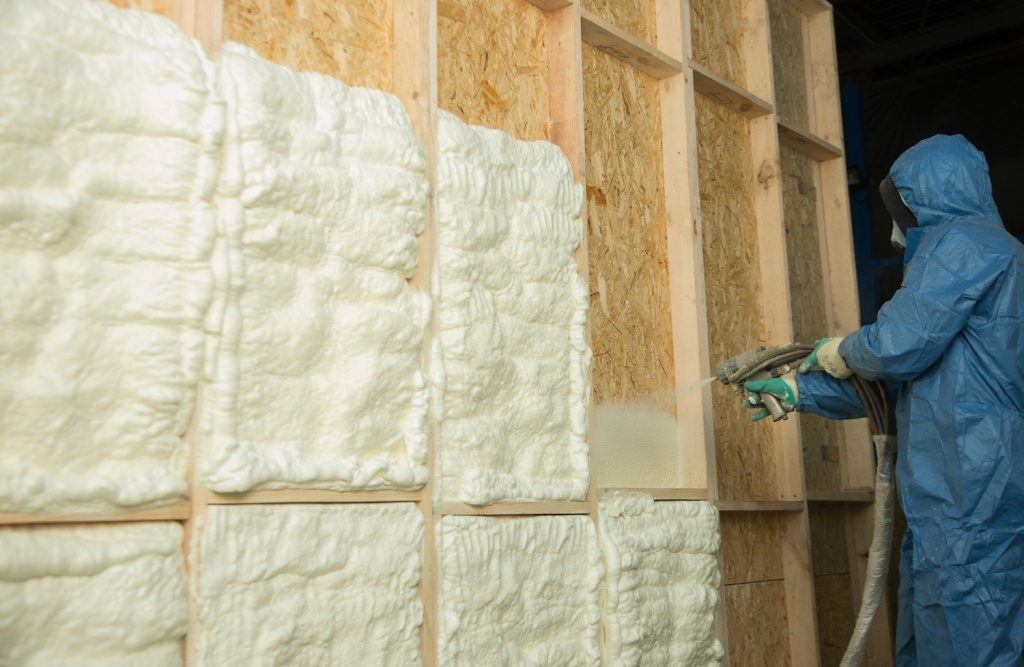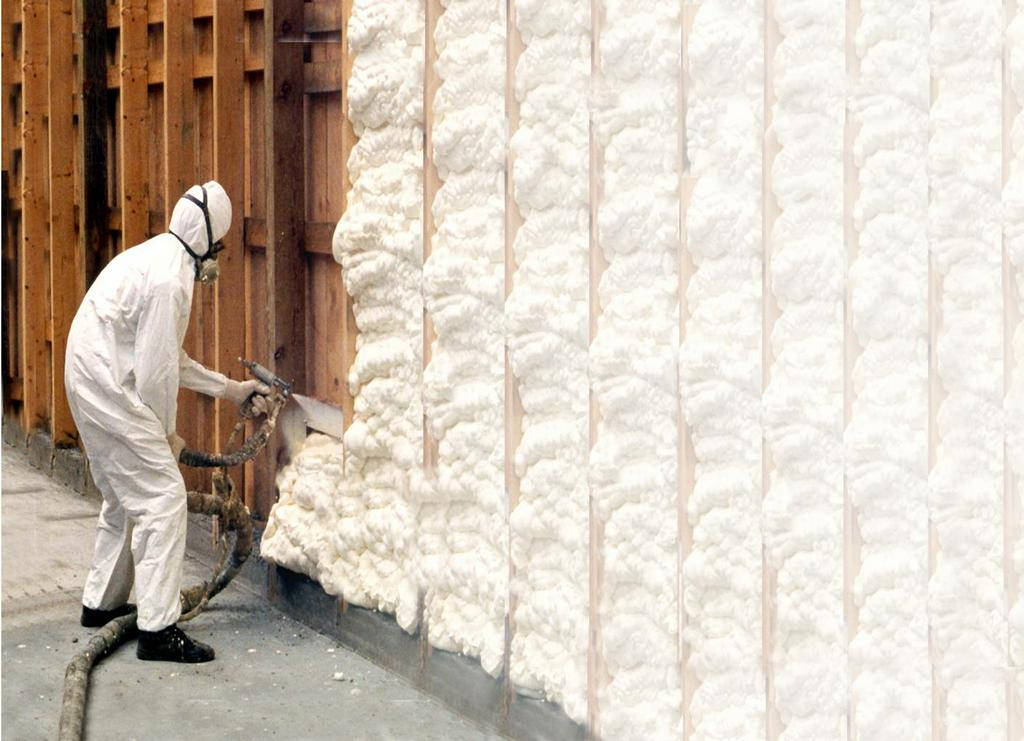Typical Myths Concerning Spray Foam: Debunking the Misconceptions
Typical Myths Concerning Spray Foam: Debunking the Misconceptions
Blog Article
Top Reasons to Pick Spray Foam for Your Next Insulation Task
When considering insulation options for your following task, spray foam stands out due to its remarkable efficiency features and performance benefits. As you weigh your choices, exploring the versatile applications and long-term benefits of spray foam might disclose compelling factors to include it right into your insulation method.
Superior Insulation Efficiency

The high R-value of spray foam, which measures its thermal resistance, is an additional crucial advantage. Closed-cell spray foam, for example, can achieve an R-value of as much as 6.5 per inch, substantially surpassing fiberglass batts and cellulose. Moreover, spray foam insulation develops a closed seal, which minimizes thermal connecting and minimizes the possibility for mold and mildew development because of moisture build-up.

Energy Performance Advantages
The energy performance benefits of spray foam insulation are significant, further improving its charm as a top option for building insulation. Spray foam expands upon application, creating an impermeable seal that minimizes air leaks, which is an usual source of energy loss in standard insulation products.
Additionally, spray foam insulation flaunts a high R-value per inch, which suggests it uses much more thermal resistance in less space compared to alternatives like fiberglass or cellulose (Spray Foam). This efficiency not just contributes to prompt energy cost savings however likewise promotes long-term sustainability by reducing the general energy intake of a structure
Additionally, the execution of spray foam can certify homeowners for energy effectiveness motivations and tax obligation credit reports, including financial benefits to its energy-saving abilities. In an era where power conservation is vital, choosing spray foam insulation not just enhances comfort yet also lines up with eco responsible practices, making it a sensible choice for both residential and business projects.
Moisture and Mold Resistance
Provided its unique structure and application method, spray foam insulation supplies phenomenal dampness and mold resistance, making it an ideal option for various settings. The closed-cell structure of spray foam produces a strong obstacle that successfully seals off prospective moisture ingress, therefore minimizing the likelihood of mold growth. Unlike typical insulation products, which can take in water and supply a breeding place for mold, spray foam remains invulnerable to dampness, boosting the general wellness of the indoor setting.
Furthermore, the application process of spray foam entails increasing and loading spaces and cracks, making certain a limited seal that reduces air leakages. This particular not only improves energy efficiency but also helps control humidity levels within the area. Proper humidity control is critical for stopping mold and mold, making spray foam insulation specifically beneficial in areas vulnerable to wetness, such as basements and crawl areas.
Along with its moisture-resistant homes, spray foam is additionally inherently immune to mold and mildew growth. This characteristic guarantees that structures and homes stay risk-free and healthy and balanced over time, supplying assurance to homeowners and building managers alike.
Long-Term Cost Financial Savings
Buying spray foam insulation yields considerable long-lasting cost financial savings, largely via boosted power effectiveness. Unlike typical insulation materials, spray foam creates an airtight seal that lessens air leakage. This reduction in drafts results in decrease heating & cooling costs, as a/c systems do not need to work as difficult to keep comfy indoor temperature levels.
Moreover, the superior insulating buildings of spray foam suggest that homes remain regularly comfy year-round, minimizing reliance on energy-consuming devices. Over time, these cost savings can gather, leading to an obvious decrease in utility bills.
Additionally, spray foam insulation contributes to the long life of your home's structure by protecting against wetness accumulation and mold growth, which can cause expensive repair work. With its durability and resistance to clearing up, spray foam preserves its efficiency over the years, making certain that the preliminary investment remains to settle.
Basically, selecting spray foam insulation not only improves your home's power effectiveness but also equates right into substantial long-term home monetary advantages, making it a smart financial investment for house owners aiming to minimize prices while enhancing comfort and sustainability.
Versatile Application Options
Numerous application alternatives make spray foam insulation a very functional selection for a variety of building projects (Spray Foam). This flexibility allows it to be successfully utilized in residential, commercial, and commercial settings, dealing with varied insulation needs
Spray foam can be applied in attic rooms, wall surfaces, crawl rooms, and even roofings, giving smooth insurance coverage that removes gaps and gaps where air leaks frequently happen. Its capability to broaden upon application ensures a tight seal, which is crucial for power effectiveness and dampness control.
Moreover, spray foam insulation is readily available in different formulations, consisting of open-cell and closed-cell types, enabling customized options based upon specific job needs. Open-cell foam Look At This is lighter and far better suited for soundproofing, while closed-cell foam uses superior insulation and architectural honesty, making it perfect for areas subjected to dampness.
Furthermore, spray foam can be used in hard-to-reach areas, boosting its suitability for retrofitting existing structures. With the capability to stick to different substrates, consisting of timber, concrete, and metal, spray foam insulation attracts attention as a functional alternative that satisfies the needs of modern-day structure methods.
Final Thought
In conclusion, spray foam insulation arises as a remarkable choice for insulation projects due to its outstanding thermal resistance, energy efficiency, and capacity to produce impermeable seals that stop moisture and mold growth. Picking spray foam insulation ensures a detailed remedy that meets the demands of modern building and power effectiveness criteria.
When it comes to achieving ideal power performance in commercial and residential structures, spray foam insulation stands out for its remarkable insulation efficiency.The power effectiveness advantages of spray foam insulation are significant, more improving its allure as a top option for constructing click here for more info insulation.Investing in spray foam insulation returns significant long-lasting expense savings, mostly with boosted energy performance.In conclusion, spray foam insulation emerges as a premium alternative for insulation projects due to its exceptional thermal resistance, power efficiency, and capability to develop closed seals that stop moisture and mold growth. Selecting spray foam insulation guarantees an extensive option that satisfies the needs of modern building and power performance criteria.
Report this page